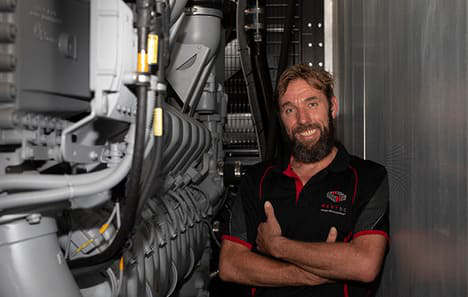By Marcelo Goncalves, Head of Enterprise & Government Sales
Thrivability in the digital era means businesses not only want to have their cake and eat it too, but they also need to. All bets are on Hybrid IT to deliver those tangible benefits promised by intimately interconnected physical and virtual infrastructure. Question is, how do you do it?
As hybridised environments grow and diversify, it’s essential to understand how to turn the broad array of anecdotal benefits into tangible outcomes that support defined business requirements.
Colocation is a crucial part of this blended solution – providing not only resilience but enabling the agility and elasticity needed to thrive in a digital society.
Tailored to you
Hybrid IT is the chief facilitator of optimised resilience and flexibility. As both technology and the requirements of your organisation evolve, you need flexibility and the agility of digital native infrastructure, without compromising reliability, maintainability or security.
With organisations leaning further into Hybrid IT infrastructures, it goes without saying that getting Hybrid IT right is the first step in mitigating the risks associated with disruption, as well as the changing compliance and security landscapes.
Seamless growth
Growth is on the minds of every leader, so as your business grows, it’s essential your infrastructure scales and flexes with it. As the engine room of business, your infrastructure should enable your strategic plans rather than constrain them.
Colocation and interconnection are the drivers behind successful Hybrid IT deployments as it delivers the organisational elasticity that businesses are seeking plus proximity to clouds which is so important for flexing the muscles of latency-sensitive applications.
As needs change, infrastructure needs to move with it with full empowerment to change course and scale capacity plus make new connections at the bandwidth and duration required for the task at hand and/or as the business and demand dictates.
The value of optionality shouldn’t be underestimated. The power of choice and autonomy to self-provision and decommission is the key to embedding flexibility and agility into your core interconnection strategy. It’s a critical component of being able to deliver on growth and innovation fueled by cloud projects and investments.
Colocation as a connector
IT teams need to retain complete control of when and where new interconnections between teams, clouds, locations and workloads are lit-up with absolute certainty over deployment costs, capacity and ‘live’ timeframes.
Hybrid IT architectures create almost infinite flexibility and customisation but interconnecting it all can be complex. With the number of moving parts on the rise, colocation harmonises the varying services and connections your business relies on.
Keeping as much as possible within a trusted sovereign ecosystem is also a big step forward for mitigating security risk.
Technologies such as software-programmable interconnection (SPI) and/or software defined networks (SDN) are reshaping the way network operations are designed, configured, deployed and funded. It may seem like a unicorn, but, in reality, it delivers exactly what it promises. Fundamentally, this class of network services delivered within a colocated environment improves visibility, stability and agility at the same time as reducing costs, complexity and latency.
Network as-a-service
Most enterprise networks have grown organically into a patchwork of public internet access, VPNs, MPLS, and cloud-native SD-WAN. It works, but it’s difficult to make changes or visualise the full network clearly. This is why Hybrid IT architectures are increasingly complemented by a Network-as-a-Service (NaaS) model.
NaaS introduces visibility and real-time control over network components with the advantage of a metered, pay-as-you-go cost model. It simplifies transitioning network management from re-active to pro-active as congestion is identified as it forms, with automated flexibility eliminating service degradation before it impacts the customer or user experience.
COVID-19 reinforced the importance of infrastructure that adopts the same inherent agile qualities of cloud native architectures. Work from home mandates and social distancing played havoc with bandwidth requirements of centralised in-house critical business systems. It was a scramble for organisations to maintain business continuity in the face of this disruption.
Chemist Warehouse faced the same challenge, sending 500 administrative staff home and in a very short space of time, its website experienced unprecedented demand from online shoppers.
Their response was paramount to avoid business disruption, therefore they leaned heavily on their colocated environment to support the immediate changes needed. The flexibility of their Hybrid IT infrastructure meant Chemist Warehouse were able to make changes to network configurations and pivot to new requirements with ease.
No third-party lead times, no product constraints or long contracts. Importantly, they maintained service continuity and quality amidst chaotic conditions. Now that things are starting to get back to some form of normal, they have the flexibility to scale back requirements. But they have also learned important lessons about being ready for anything and bolstered their ability to cope with the next unexpected event.
In conclusion
Inherent agility and flexibility have elevated Hybrid IT architectures to now be the de facto standard for transforming organisations. You’ve heard it, but I encourage you to see for yourself how we can help you reduce risk and drive incremental gains from your infrastructure and interconnection strategy.
Reach out to NEXTDC to better understand how effective infrastructure and interconnection architecture will remove complexity, cost and risk from your ballooning data management challenges.


